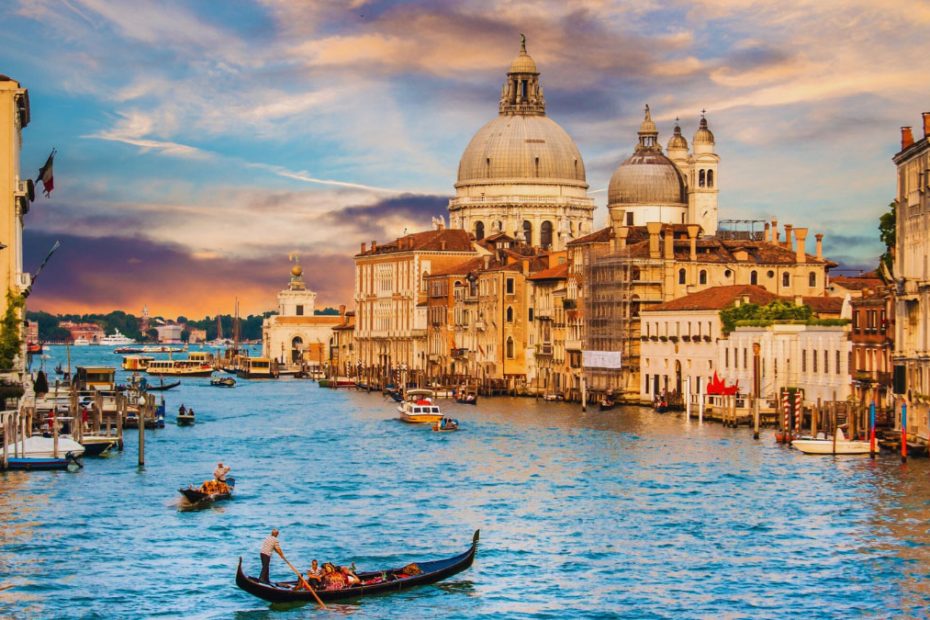Planning a trip to Italy can feel overwhelming with so many incredible places to see and experiences to savor. I’ve crafted a perfect 7-day itinerary that’ll help you make the most of your visit, from the romantic canals of Venice to the historic ruins of Rome. Whether you’re a history buff, a foodie, or someone who loves stunning landscapes, this itinerary has something for everyone.
Key Takeaways
- Day 1: Rome Highlights – Start your Italian adventure in Rome by exploring iconic sites such as the Colosseum, Palatine Hill, and Roman Forum. Don’t miss the Vatican Museums and St. Peter’s Basilica, and enjoy local cuisine at recommended dining spots like Trattoria Da Enzo al 29.
- Day 2: Deep Dive into Rome – Continue exploring Rome’s historic and cultural sites, including the Vatican City and the vibrant Trastevere neighborhood. Opt for guided tours to enrich your experience at places like the Colosseum and Roman Forum.
- Day 3: Florence Day Trip – Take a high-speed train to Florence and visit renowned landmarks like the Duomo, the Uffizi Gallery, and enjoy local Florentine cuisine. A visit to Florence offers a compact yet rich experience in Renaissance art and culture.
- Day 4: Magical Venice – Spend your day in Venice enjoying gondola rides, exploring St. Mark’s Basilica, and discovering hidden gems like the Libreria Acqua Alta and the Chiesa Di Santa Maria dei Miracoli in quieter neighborhoods.
- Day 5: Fashionable Milan – In Milan, visit the breathtaking Duomo di Milano, explore the Fashion District, and indulge in local Milanese dishes such as risotto alla milanese and ossobuco.
- Day 6: Scenic Tuscany – Drive through Tuscany’s picturesque landscapes, partake in wine tours at renowned vineyards, explore medieval villages like San Gimignano, and savor traditional Tuscan cuisine.
- Day 7: Relax on the Amalfi Coast – End your trip by unwinding along the Amalfi Coast’s charming towns like Amalfi and Positano. Enjoy beach activities at Fiordo di Furore and the Grotta dello Smeraldo, followed by a memorable dinner at Ristorante Marina Grande.
Day 1: Arrival in Rome
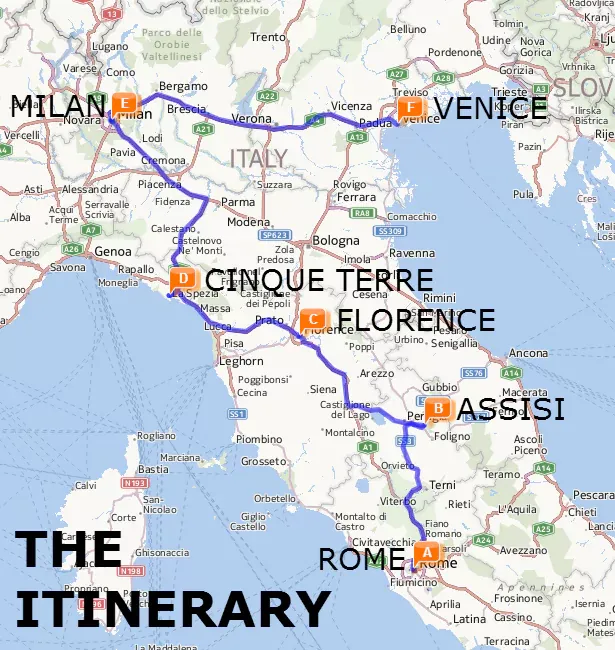
Day 1 in Italy starts in Rome, with a rich mix of historical sites and vibrant city life. Below are the key highlights, recommended activities, and dining options to make the most of your day.
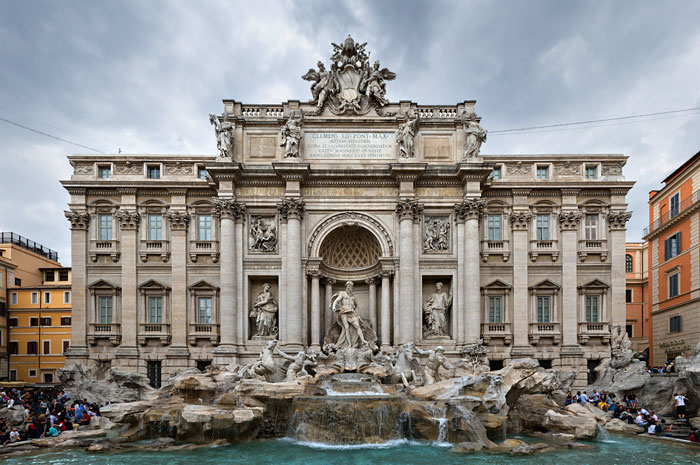
Key Highlights
Explore the historic center of Rome to immerse yourself in the rich history and culture of the city. Some key sites include the Colosseum, Palatine Hill, and Roman Forum. At the Colosseum, you can marvel at the ancient amphitheater which once hosted gladiator contests. Palatine Hill provides a panoramic view of the city, while the Roman Forum offers a glimpse into the daily life of ancient Romans.
Stroll through the Pantheon, an architectural marvel with a 2,000-year history. Nearby, Piazza Navona, famous for its lively atmosphere and Baroque architecture, is perfect for people-watching and enjoying the local vibe. Make sure to visit the Trevi Fountain, where it’s tradition to toss a coin for good luck. The Spanish Steps, a popular meeting place, also offer a beautiful view of Rome’s bustling streets.
| Key Sites | Highlights |
|---|---|
| Colosseum | Ancient amphitheater |
| Palatine Hill | City views |
| Roman Forum | Historical ruins |
| Pantheon | Architectural marvel |
| Piazza Navona | Baroque architecture |
| Trevi Fountain | Coin-tossing tradition |
| Spanish Steps | Scenic view |
Recommended Activities
Head to the Vatican City, a must-visit independent city-state within Rome. Start with the Vatican Museums, home to thousands of works of art, including the Sistine Chapel with Michelangelo’s ceiling. St. Peter’s Basilica, one of the largest churches in the world, is stunning with its Renaissance architecture and religious significance.
If you prefer a leisurely activity, consider a walk along the Tiber River. You’ll find picturesque bridges and scenic pathways. Another excellent choice is to explore the Trastevere neighborhood, known for its charming alleyways and vibrant nightlife. Here, you can experience authentic Roman life away from the tourist hubs.
| Activities | Locations |
|---|---|
| Vatican Museums | Vatican City |
| St. Peter’s Basilica | Vatican City |
| Tiber River Walk | Tiber River |
| Trastevere | Neighborhood |
Dining Options
When it comes to dining in Rome, there are countless options to savor Italian cuisine. I recommend starting with Antico Forno Roscioli, which offers excellent baked goods and delicious Roman-style pizza. Trattoria Da Enzo al 29 is another great choice for traditional Roman dishes in a cozy setting. For gelato lovers, Giolitti, one of Rome’s oldest gelaterias, provides an array of flavors to cool off after a day of sightseeing.
If you’re near Piazza Navona, consider dining at Ristorante La Scaletta, known for its seafood and pasta dishes. For a unique experience, try Ristorante Ad Hoc, offering gourmet meals with a blend of tradition and innovation. Remember to try local favorites such as carbonara, cacio e pepe, and supplì to get a true taste of Roman cuisine.
| Dining Spot | Specialty |
|---|---|
| Antico Forno Roscioli | Baked goods, pizza |
| Trattoria Da Enzo al 29 | Traditional dishes |
| Giolitti | Gelato |
| Ristorante La Scaletta | Seafood, pasta |
| Ristorante Ad Hoc | Gourmet meals |
Enjoy exploring Rome and immersing yourself in its rich history and culinary delights on Day 1.
Day 2: Exploring Rome
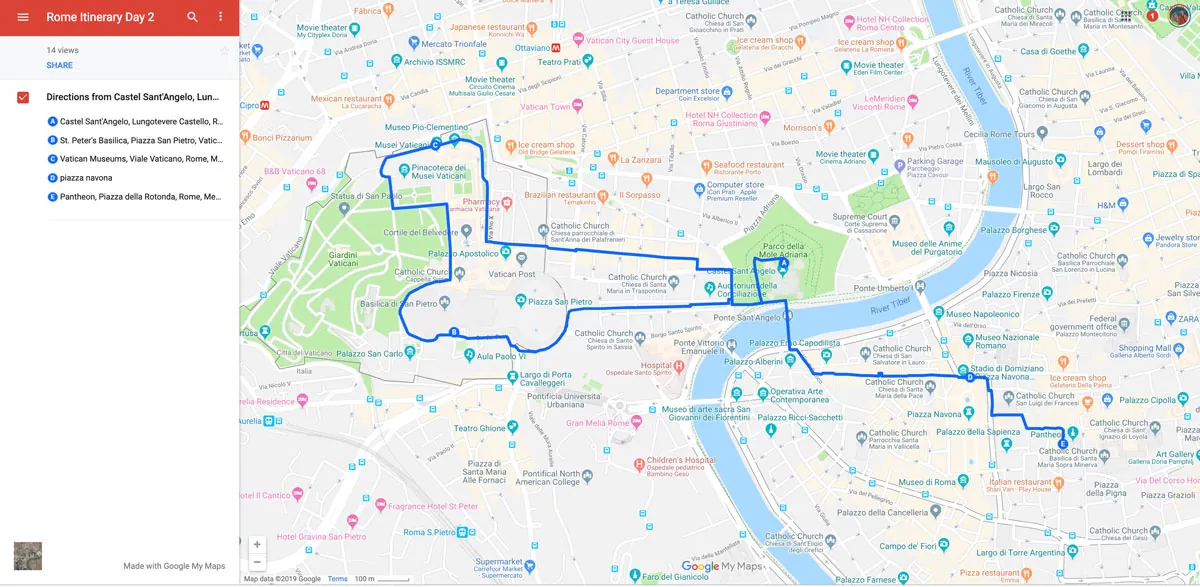
On the second day in Rome, dive deeper into its rich history and culture. From Vatican City to the bustling Trastevere neighborhood, there’s plenty to see and do.
Vatican City
Vatican City, the heart of the Roman Catholic Church, is a must-see. I started at St. Peter’s Basilica. The grandeur is awe-inspiring. Climbing the dome offers a stunning panorama of Rome. It’s exhausting but rewarding. Afterward, the Vatican Museums await. Home to the Sistine Chapel, these museums house an extensive art collection. Hiring a private tour guide enriches the experience by providing detailed insights and skipping long lines. For tickets, booking in advance ensures a hassle-free visit.

Colosseum and Roman Forum
Next, the Colosseum and Roman Forum offer a glimpse into ancient Rome. Begin with a guided tour of the Colosseum. It’s colossal and steeped in history. A combined ticket includes the Colosseum, Roman Forum, and Palatine Hill. It’s economical and comprehensive. The Roman Forum, once the heart of Roman public life, is a sprawling ruin of temples, basilicas, and arches. Palatine Hill, the centermost of the Seven Hills of Rome, delivers splendid views and is significant historically as the birthplace of Rome. Each location provides context to Rome’s glorious past, making the visit not just a tour but a journey through time.
Trastevere Neighborhood
Evening calls for Trastevere. This neighborhood is vibrant and lively. Its narrow, cobbled streets are lined with colorful buildings, shops, and trattorias. The atmosphere is unique, blending ancient charm with a modern twist. Trastevere’s restaurants and bars are perfect for unwinding after a day of exploration. Try local dishes at Da Enzo al 29 or Tonnarello for an authentic Roman meal. Street performers add to the charm, making the evening memorable. This mix of history, culture, and cuisine encapsulates the essence of Rome, making Trastevere a fitting end to a day of exploration.
Day 3: Day Trip to Florence

Florence, the heart of Italy’s Renaissance heritage, offers a perfect blend of art, culture, and history. Here’s how to make the most of a day trip to this beautiful city.
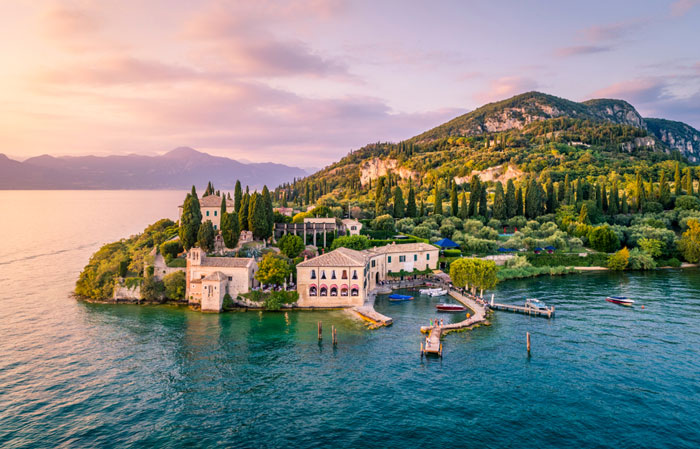
Travel Options
Getting to Florence is straightforward. Trains provide a convenient option, linking Florence to major cities like Rome, Venice, and Milan. High-speed trains like Trenitalia Frecciarossa and Italo ensure a swift and comfortable journey, bringing you to Florence Santa Maria Novella station within a few hours.
For those who prefer flexibility, renting a car opens up possibilities beyond Florence. Starting in Florence, you can explore the Tuscan countryside, with destinations like Siena, Lucca, and the Chianti wine region easily accessible. This option’s great if you plan to extend your exploration beyond the city limits.
Must-See Sights
Florence brims with iconic landmarks. The Duomo Complex is a must-see, featuring the Cathedral of Florence, the Baptistery of St. John, and Giotto’s Campanile. Climbing the Duomo rewards you with panoramic views of the city, offering a breathtaking perspective.
The Uffizi Gallery, renowned for its Renaissance art collection, is another highlight. Housing masterpieces from Botticelli, Michelangelo, and Leonardo da Vinci, it’s essential to book tickets in advance to avoid long lines and ensure a smooth visit. Florence’s artistic heritage shines here, making it a treasure trove for art lovers.
Local Cuisine
Florentine cuisine is a gastronomic delight. Start your culinary journey with a hearty serving of Bistecca alla Fiorentina, a traditional T-bone steak, best enjoyed in local trattorias. Pair your meal with a glass of Chianti, sourced from the nearby Chianti wine region.
For a taste of Florence’s sweeter side, try cantucci con Vin Santo. These almond cookies, dipped in sweet wine, make a perfect end to your meal. Don’t miss sampling fresh pasta dishes like Pappardelle al Cinghiale, featuring rich wild boar ragu. Exploring Florence’s food scene promises an authentic and savory experience.
Day 4: Discovering Venice
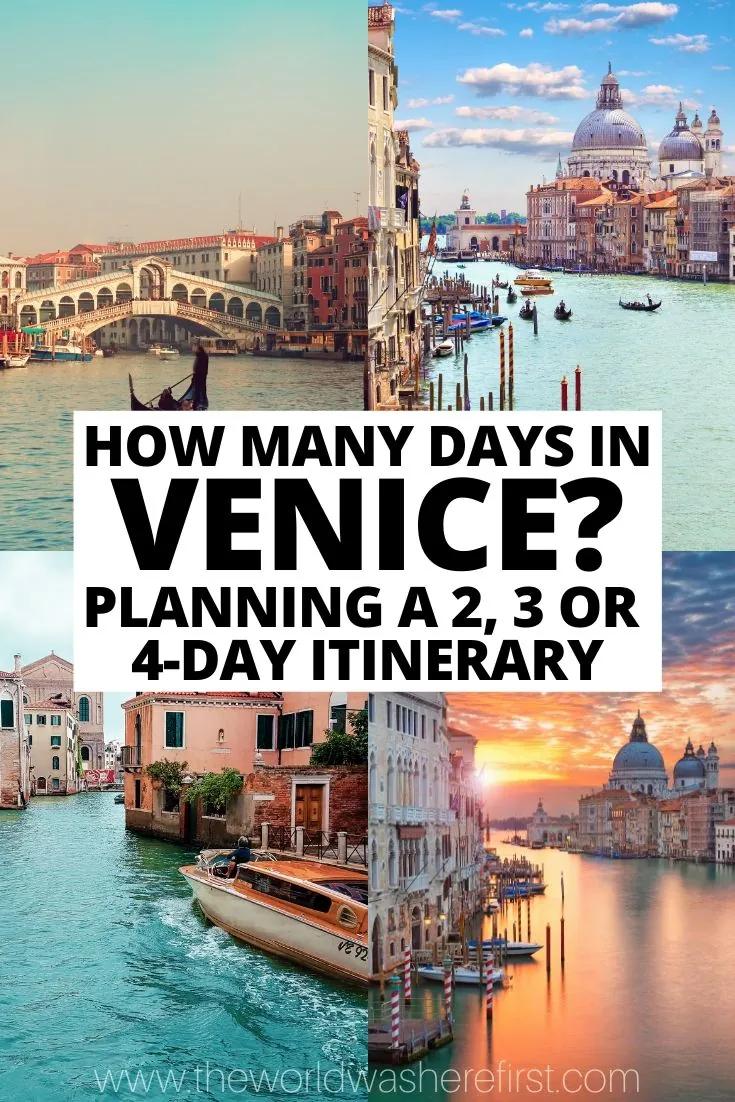
Venice, the city of canals, offers a magical experience that feels like a step back in time. Spend your day exploring its iconic landmarks and hidden corners.
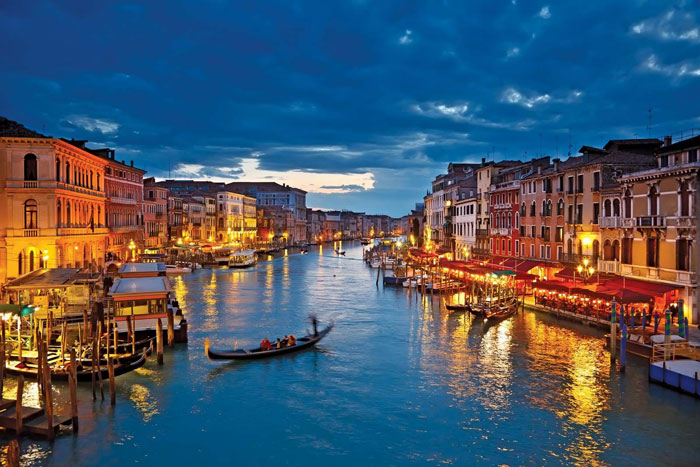
Gondola Rides and Canals
A gondola ride in Venice is a must-do. Gondolas glide through the city’s intricate network of canals, offering a unique view of Venice’s stunning architecture. I recommend starting from the Grand Canal, the city’s main waterway. The ride typically lasts about 30 to 40 minutes and costs around €80 for a daytime trip. It’s a bit more expensive in the evening. You can share the ride with up to six people to split the cost.
Rialto Bridge and its surroundings are especially picturesque. Here, you’ll encounter the bustling life of the canal—gondolas passing under the bridge, vaporettos (water buses) ferrying locals and tourists, and the beautiful facades of old Venetian buildings. For a less crowded experience, opt for a ride through the quieter canals in districts like Dorsoduro or Cannaregio. This area’s tranquility provides a serene escape from the bustling tourist spots, allowing you to appreciate the city’s charm at a slower pace.
St. Mark’s Basilica
Start your morning at St. Mark’s Basilica, one of Venice’s most famous landmarks. This magnificent basilica, with its awe-inspiring architecture, offers a glimpse into Venice’s rich history and art. The church’s exterior features intricate mosaics and statues, while the interior dazzles with golden mosaics depicting biblical scenes. Be sure to dress appropriately—cover shoulders and knees. Once inside, photography is not allowed, so you’ll need to capture the beauty in your memory.
Adjacent to the basilica is St. Mark’s Campanile, the bell tower offering panoramic views of Venice. For a small fee, you can take an elevator to the top. From there, the breathtaking vistas include the city, the lagoon, and the Dolomite Mountains in the distance. Early visit is recommended to avoid the crowds, as this spot is popular with tourists. Nearby, you’ll find St. Mark’s Square, the city’s bustling heart, lined with cafés and shops, making it a perfect place to enjoy a coffee and soak in the atmosphere.
Hidden Gems
Venturing beyond the famous landmarks, Venice’s quieter neighborhoods hold hidden treasures. In San Polo and Cannaregio, discover lesser-known attractions that reveal the city’s deeper character. Start with Libreria Acqua Alta, a quirky bookstore where books are stored in bathtubs and gondolas to protect them from flooding. This unique place is a cherished spot for book lovers and offers a range of titles in various languages.
Next, visit the Chiesa Di Santa Maria dei Miracoli, a Renaissance church known for its beautiful marble facade and serene interior. It’s less crowded than the more famous churches, allowing for a peaceful visit. Wandering through these neighborhoods, you’ll stumble upon charming squares, quiet canals, and local eateries. In Cannaregio, explore the Jewish Ghetto, one of the oldest in the world, rich in history and culture. Venice’s hidden gems offer a break from the well-trodden tourist paths and a chance to see a more authentic side of the city.
Day 5: Visiting Milan

On Day 5, I explore the vibrant city of Milan, renowned for its fashion and historical landmarks. My visit features iconic sights and memorable experiences.
Duomo di Milano
I start my day at the Duomo di Milano, Milan’s iconic Gothic cathedral. This masterpiece enthralls me with its intricate facades and towering spires. Inside, I walk through its vast interiors, admiring the awe-inspiring architecture and detailed sculptures. If I feel adventurous, I climb to the terrace, offering panoramic views of Milan’s skyline. Among the notable elements, the roof features a unique array of statues, pinnacle figures, and ornate decorations. According to statistics, over 5 million people visit each year to witness this remarkable structure.
Fashion District
After a morning immersed in history, I head to the Fashion District for an afternoon of shopping. This district, known as Quadrilatero della Moda, hosts high-end boutiques and designer stores. Via Montenapoleone and Via Della Spiga are among the most prestigious streets here. As Milan is the fashion capital of Italy, exploring these chic avenues feels like stepping into a runway show. I see luxury brands like Prada, Gucci, and Versace lining the streets. For a unique touch, several boutiques offer custom tailoring, giving me a personalized shopping experience.
Dining Experiences
I cap off my day indulging in Milan’s culinary delights. Milanese cuisine offers dishes rich in tradition and flavor. At dinner, I savor risotto alla milanese, characterized by its creamy texture and saffron flavoring. Ossobuco, a dish of braised veal shanks, stands out as another highlight. Many restaurants also offer aperitivo, a pre-dinner drink accompanied by light snacks. Trattorias and upscale dining venues alike create a memorable gastronomic experience, reflecting the city’s sophisticated palate.
Day 6: Scenic Drive to Tuscany

Leaving Milan behind, a scenic drive through the rolling hills and picturesque landscapes of Tuscany offers a serene escape. This day immerses you in the rural charm and cultural richness of this region.
Wine Tours
Tuscany’s wine tours are legendary, providing a comprehensive jump into some of Italy’s best vintages. Visit renowned vineyards like Antinori nel Chianti Classico and Castello di Ama. Participate in guided tours detailing the winemaking process from grape to glass. Sample a variety of wines, including Chianti, Brunello di Montalcino, and Vino Nobile di Montepulciano. Private and group tours are available, making the experience personal and educational. Pre-booking these tours is advisable, especially during peak tourist seasons, to ensure availability. I found that pairing these tastings with local cheeses and cured meats enhanced the experience. The lush vineyards and expert vintners made this wine adventure unforgettable.
Medieval Villages
Exploring Tuscany’s medieval villages is like stepping back in time. Towns like San Gimignano and Monteriggioni offer well-preserved fortifications and winding, cobblestone streets. San Gimignano, known for its medieval towers, offers a skyline punctuated by stone structures. Monteriggioni’s intact walls provide stunning views of the surrounding countryside. Visit local artisans and shops selling hand-crafted goods, from pottery to leather products. Historical sites such as the Collegiate Church in San Gimignano feature impressive frescoes. Dining in rustic trattorias, I savored traditional dishes and locally sourced ingredients. Each village has its distinct charm and historical significance, making them essential stops.
Culinary Delights
Tuscany’s culinary scene is diverse and rich in tradition. Enjoy meals at renowned restaurants like Osteria di Passignano and La Tenda Rossa. Savor dishes such as ribollita, a hearty vegetable and bread soup, and bistecca alla Fiorentina, a grilled T-bone steak. Participate in cooking classes to learn how to make authentic Tuscan pasta and desserts. Local markets, like Mercato Centrale in Florence, feature fresh, regional produce, cheeses, and meats. Street food options, such as lampredotto, provide quick yet authentic experiences. I appreciated the variety of dining options, from Michelin-starred establishments to casual, family-run eateries. Tuscany’s culinary offerings highlight the region’s farm-to-table philosophy and dedication to gastronomic excellence.
Day 7: Relaxing in Amalfi Coast
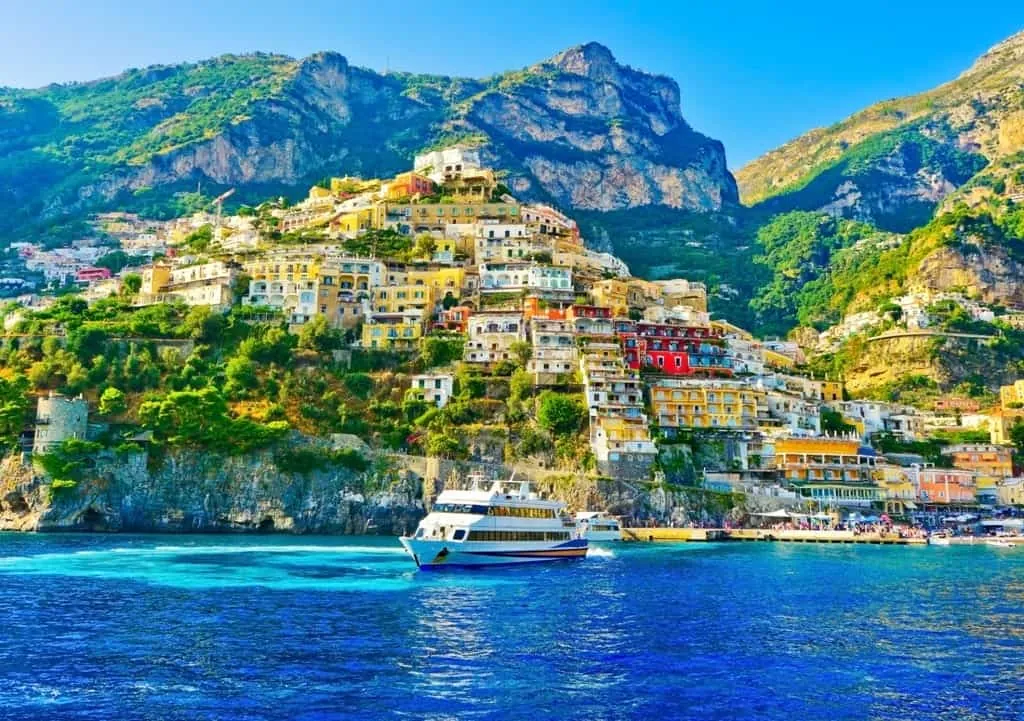
The final day of my 7-day itinerary in Italy is dedicated to unwinding along the stunning Amalfi Coast. It’s a perfect opportunity to soak in the coastal charm, engage in leisurely activities, and savor a memorable last meal.
Coastal Towns
I started my morning in Amalfi, a town brimming with history and picturesque settings. Exploring Piazza Duomo, the heart of the town, gave me a glimpse into its vibrant culture. The Cathedral of Sant’Andrea looms large in the piazza, with its stunning facade and intricate details. A visit to the historic Pasticceria Pansa offered the chance to indulge in delicious Italian pastries. Next, I ventured to the Museo della Carta to learn about the town’s rich paper-making history, which dates back centuries.
By midday, I made my way to Positano. The town captivates visitors with its colorful houses and narrow, steep streets that lead down to breathtaking beaches. Finding a spot at a beachside cafe, I enjoyed a leisurely lunch while absorbing the stunning coastal views. The relaxed pace here offered a perfect backdrop for unwinding and enjoying the vibrant atmosphere.
Beach Activities
In the afternoon, I visited Fiordo di Furore, a hidden gem on the Amalfi Coast. Accessing the beach via stairs off the road, I found a tranquil spot framed by dramatic cliffs and the Amalfi Coast Road above. The picturesque setting made it a perfect place to bask in the sun and take refreshing dips in the blue waters.
Next, I headed to Grotta dello Smeraldo, or the Emerald Grotto, in Conca dei Marina. Accessible through a ticket costing €10 per person, the grotto offered a mesmerizing experience. The sea cave is illuminated by natural light passing under the rock formations, creating a vivid emerald glow. The boat tour included in the ticket provided an immersive way to explore this natural wonder, enhancing the magical atmosphere.
Perfect Last Meal
For my final dinner in Amalfi, I chose Ristorante Marina Grande, a renowned restaurant with stunning sea views. The atmosphere was both relaxed and sophisticated, making it an ideal spot to end my journey through Italy. The menu featured a variety of seafood dishes crafted from fresh, local ingredients. I opted for the spaghetti alle vongole, a classic Italian pasta dish with clams, which perfectly captured the essence of coastal Italian cuisine. With the sound of waves in the background and the stunning sunset views, my last meal in Amalfi was a fitting end to an unforgettable week in Italy.
Conclusion
Reflecting on my week in Italy I can’t help but feel a sense of awe at the diverse experiences this beautiful country offers. From the ancient ruins of Rome to the artistic treasures of Florence and the romantic canals of Venice each city left a unique imprint on my heart. The scenic drive through Tuscany and the relaxing moments along the Amalfi Coast provided the perfect balance of adventure and tranquility.
Italy’s rich history stunning landscapes and mouthwatering cuisine made every day an unforgettable journey. As I savored my last meal overlooking the Amalfi sunset I knew this itinerary had given me a true taste of Italy’s magic. Whether it’s your first visit or a return trip this 7-day itinerary promises memories that will last a lifetime.
Frequently Asked Questions
What cities are included in the 7-day Italy itinerary?
The itinerary includes Rome, Florence, Venice, and Milan, with additional visits to Tuscany and the Amalfi Coast.
How much time is spent in each city?
Each major city, including Rome, Florence, Venice, and Milan, is explored for one day. Day 6 and Day 7 cover Tuscany and the Amalfi Coast.
What can I expect on Day 6 in Tuscany?
Day 6 involves a scenic drive through Tuscany, visiting vineyards, medieval villages, and enjoying authentic Tuscan cuisine.
What activities are planned for Day 7 along the Amalfi Coast?
Day 7 includes exploring Amalfi’s historical sites, relaxing in Positano, visiting Fiordo di Furore, and a boat tour of the Emerald Grotto.
What is the highlight of the trip along the Amalfi Coast?
The highlight is the combined experience of historical explorations, beach relaxation, and concluding the day with a seafood dinner at Ristorante Marina Grande, with stunning sunset views.
Are meals included in the itinerary?
The itinerary emphasizes savoring local Italian cuisine, including Tuscan specialties and seafood dishes at selected restaurants, but doesn’t specify meal inclusions.
Can the itinerary be customized?
Yes, the 7-day itinerary can be adjusted to match individual preferences and interests, including spending more time in specific cities or regions.
Is transportation between cities included in the itinerary?
While the itinerary suggests activities and destinations, transportation details like trains, flights, or rental cars need to be arranged separately.

